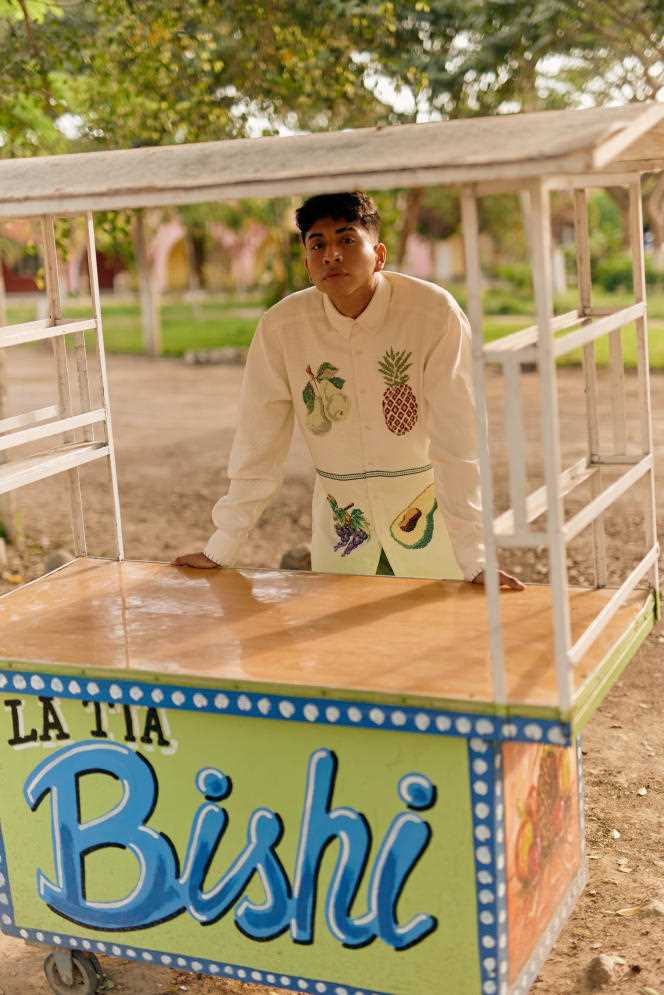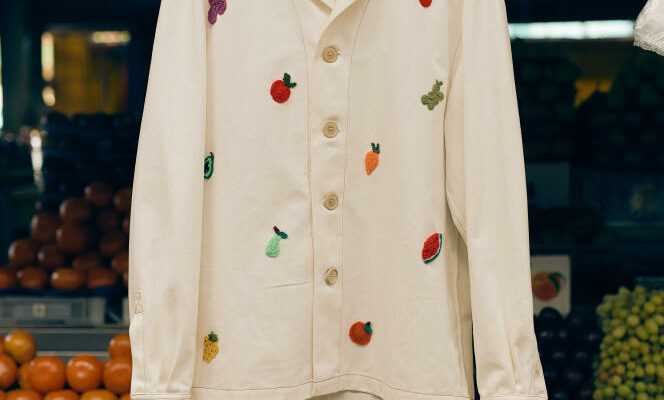Paulo and Roberto Ruiz Muñoz were children when they left Peru, where their father worked in a sugar cane factory, for Ris-Orangis, in Essonne. Today, however, it is to their South American heritage that the 29-year-old twins pay homage in the collections of their menswear label, DNI (for Documento nacional de identidad, ” ID card “). Shirts with old stamp prints depicting llamas; market stall motifs (avocado, pineapple, etc.); variegated typography cover shisha who salts the storefronts of cevicherias ; dyeing of certain pieces shisha moradadrink made from purple corn… Their dress language openly cites folkloric elements from northern Peru.
“We try to reinterpret them without fearing the first degree and in a pop wayexplain the brothers. In Peru, designers, often from rich and powerful families, swear by the evening dresses seen on all continents. We rather said to ourselves: why not highlight this precious folklore that we don’t see anywhere? Why wouldn’t a bottle of Inca Kola, the national sparkling drink, have its place on a T-shirt sold at Printemps de l’homme? » In fact, from March 19 to May 8, they offer their clothes in a stand of the Parisian department store, where they take the opportunity to invite other Peruvian designers to market their typical specialties: pisco, painted stools, flowered candlesticks…

folklore? In recent years, the term had almost disappeared from fashion circles. Too old fashioned. Too risky. Not only handling the picturesque without tact could lock you into kitsch, this antechamber of bad taste. But above all you could burn your fingers there, accused of“cultural appropriation”, or the uninhibited way in which a Western creator plunders components of a foreign culture perceived as dominated, without ever crediting it. Gucci singled out for grabbing a Sikh turban, Chanel an Aboriginal boomerang… Not a month goes by now without a label being pinned on social networks. Only since the beginning of the year 2022, Sézane has been accused of staging Guillermina Gutiérrez, an indigenous Zapotec woman, without paying her (as part of an internal company campaign); Junya Watanabe to make woven multicolored stripes his own, a textile specialty of Saltillo, Mexico; Proenza Schouler to sell feathered bracelets imitating traditional Hawaiian designs.
You have 71.9% of this article left to read. The following is for subscribers only.
